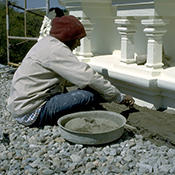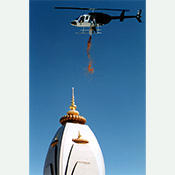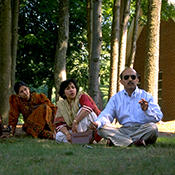Hinduism
Home Altar
American Hinduism
The Temple Builders
The New Hindu Immigrants
The Rush of Gurus
Yogananda and American Yoga
The Vedanta Society
Vivekananda at the Parliament
Trade and Transcendentalism
The Hindu Diaspora
Abodes of God: Temple and Image
Dharma: The Social Order
Karma: The Way of Action
Bhakti: The Way of Devotion
Pages
- first
- «
- 1
- 2
- 3
- 4
- 5
- 6
- 7
- 8
- 9
- 10
- 11
- 12
- 13
- 14
- 15
- 16
- 17
- 18
- 19
- 20
- 21
- 22
- 23
- 24
- 25
- 26
- 27
- 28
- 29
- 30
- 31
- 32
- 33
- 34
- 35
- 36
- 37
- 38
- 39
- 40
- 41
- 42
- 43
- 44
- 45
- 46
- 47
- 48
- 49
- 50
- 51
- 52
- 53
- 54
- 55
- 56
- 57
- 58
- 59
- 60
- 61
- 62
- 63
- 64
- 65
- 66
- 67
- 68
- 69
- 70
- 71
- 72
- 73
- 74
- 75
- 76
- 77
- 78
- 79
- 80
- 81
- 82
- 83
- 84
- 85
- 86
- 87
- 88
- 89
- 90
- 91
- 92
- 93
- 94
- 95
- 96
- 97
- 98
- 99
- 100
- 101
- 102
- 103
- 104
- 105
- 106
- 107
- 108
- 109
- 110
- 111
- 112
- 113
- 114
- 115
- 116
- 117
- 118
- 119
- 120
- 121
- 122
- 123
- 124
- 125
- 126
- 127
- 128
- 129
- 130
- 131
- 132
- 133
- 134
- 135
- 136
- 137
- 138
- 139
- 140
- 141
- 142
- 143
- 144
- 145
- 146
- 147
- 148
- 149
- 150
- 151
- 152
- 153
- 154
- 155
- 156
- 157
- 158
- 159
- 160
- 161
- 162
- 163
- 164
- 165
- 166
- 167
- 168
- 169
- 170
- 171
- 172
- 173
- 174
- 175
- 176
- 177
- 178
- 179
- 180
- 181
- 182
- 183
- 184
- 185
- 186
- 187
- 188
- 189
- 190
- 191
- 192
- 193
- 194
- 195
- 196
- 197
- 198
- 199
- 200
- 201
- 202
- 203
- 204
- 205
- 206
- 207
- 208
- 209
- 210
- 211
- 212
- 213
- 214
- 215
- 216
- 217
- 218
- 219
- 220
- 221
- 222
- 223
- 224
- 225
- 226
- 227
- 228
- 229
- 230
- 231
- 232
- 233
- 234
- 235
- 236
- 237
- 238
- 239
- 240
- 241
- 242
- 243
- 244
- 245
- 246
- 247
- 248
- 249
- 250
- 251
- 252
- 253
- 254
- 255
- 256
- 257
- 258
- »
- last





 The 1960s and 1970s mark the popularity of the guru or swami movement in the United States. In the late 1960s and 1970s, new streams of Hindu religious life came to the United States with the arrival of new gurus or spiritual teachers. ...
The 1960s and 1970s mark the popularity of the guru or swami movement in the United States. In the late 1960s and 1970s, new streams of Hindu religious life came to the United States with the arrival of new gurus or spiritual teachers. ...  Paramahansa Yogananda was a Hindu teacher who came to America to attend the International Congress of Religious Liberals in Boston in 1920, and stayed to found a religious movement. Yogananda promoted yoga as an intersection of science and religion that emphasized the mind-body relationship. Yogananda wrote The Autobiography of a Yogi, which was published in 1946; at the time of his passing in 1952, his organization the Self-Realizaiton Fellowship was the most prominent Hindu organization in the United States....
Paramahansa Yogananda was a Hindu teacher who came to America to attend the International Congress of Religious Liberals in Boston in 1920, and stayed to found a religious movement. Yogananda promoted yoga as an intersection of science and religion that emphasized the mind-body relationship. Yogananda wrote The Autobiography of a Yogi, which was published in 1946; at the time of his passing in 1952, his organization the Self-Realizaiton Fellowship was the most prominent Hindu organization in the United States.... 






